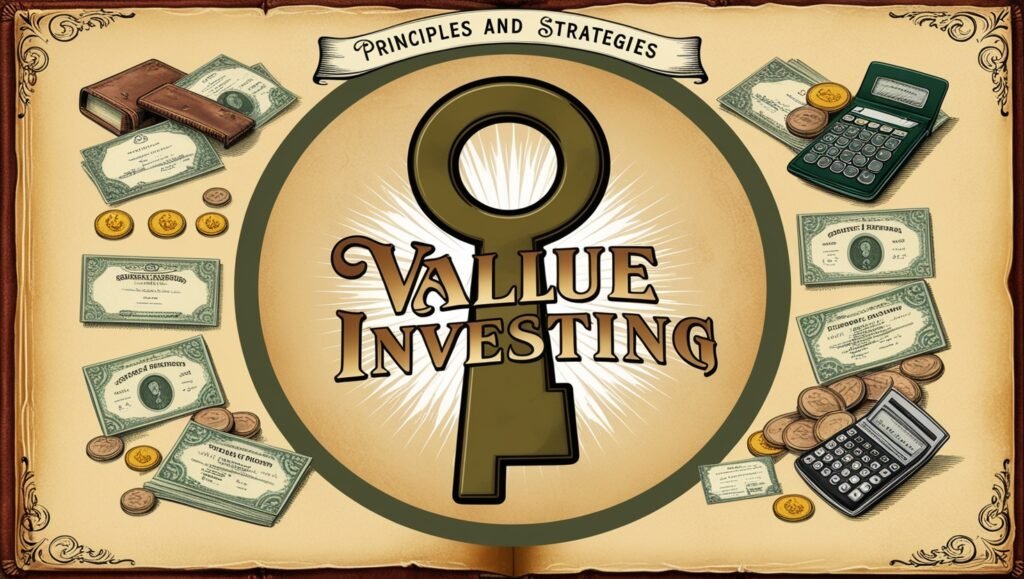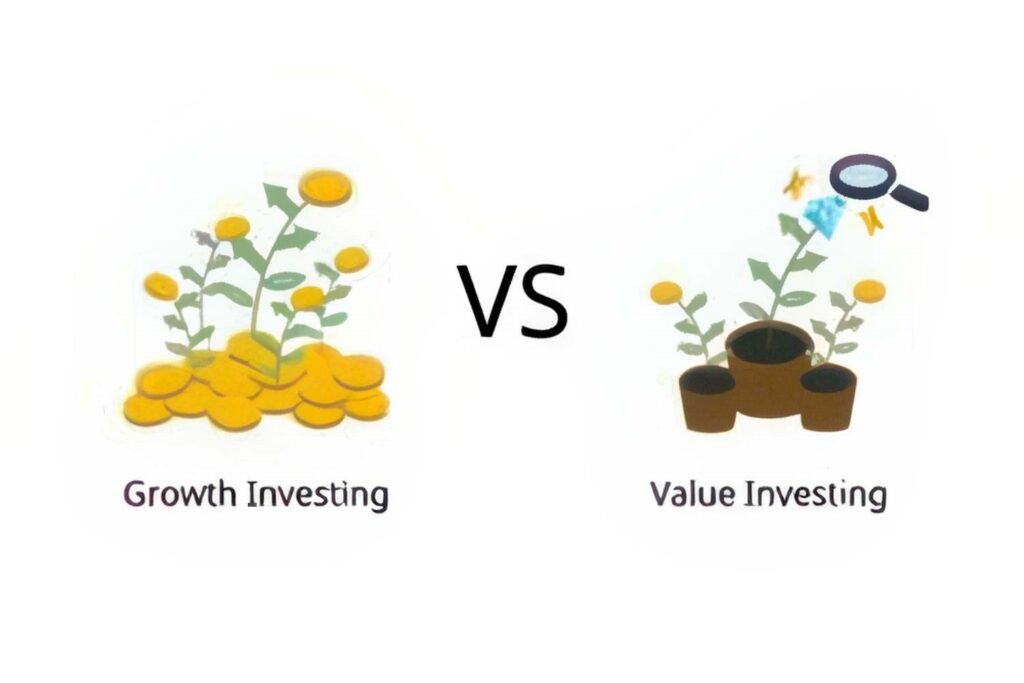Do you want security in the future and financial freedom? Then you should master long-term stock investing where patience meets prosperity. In this complete guide, we will explore proven strategies that successful investors have used to build wealth over time.
Suppose your investments grow steadily. It will give you peace of mind and provide financial stability. Don’t let stock market complications pressurize you. In this guide we simplify the process and empower you to make right investment decisions.
Fundamentals of Stock Investing
The stock market is very important to understand long-term investing strategies. It’s a complex system where investors purchase and sell shares of publicly traded companies. For businesses, it raises capital while investors use it to potentially increase their wealth over time.
You need to understand the different types of stocks before going into stock investing:
- Common Stocks: These stocks represent ownership in a company and usually come with voting rights.
- Preferred Stocks: Give higher dividend payments but generally lack voting rights.
- Growth Stocks: Shares of companies expected to grow faster than the overall market.
- Value Stocks: These stocks appear underpriced as compared to fundamentals.
- Blue-Chip Stocks: Shares of large and developed companies with stable performance history.
For investors it’s important to know these basic terminologies:
- Market capitalization: A company’s total stock value.
- Dividends: Company payments to shareholders from their profits.
- Earnings per share: A company’s metric to measure its profitability per share.
Risk-return relationship is key for investing in stocks. Stocks are riskier than bonds but these give higher long-term return potential. You can manage risk through diversification and spreading your investments across different assets.
Value Investing Principles and Strategies

Value investing is a long-term strategy focused on finding undervalued stocks. This approach was pioneered by Benjamin Graham and popularized by Warren Buffett. It aims to purchase stocks trading below their expected value.
The main idea is that short-term mispricing of stocks makes opportunities for patient investors.
Value investors assess fundamentals of a company to find its true value and invest when the stock’s price falls below this value. This technique requires willingness, discipline and patience to go against market trends.
Key Metrics for Value Investing
To evaluate a stock’s potential, value investors use different key metrics:
- Price-to-Earnings (P/E) Ratio: Compares a company’s share price to earnings per share. Lower P/E may show undervalued stock.
- Price-to-Book (P/B) Ratio: This ratio relates a company’s market value to its book value. P/B under 1 shows underpriced shares.
- Debt-to-Equity Ratio: It measures the financial leverage of a company. A lower ratio means less debt and potentially lower risk.
- Free Cash Flow: Shows the cash a company has generated after capital expenditure. The strong free cash flow signals financial health.
- Dividend Yield: For income investors, high dividend yield attracts, but it’s important to make sure that dividends are sustainable.
- Return on Equity (ROE): It calculates profitability versus shareholders’ equity. Consistently high ROE indicates quality company.
By reviewing these metrics, you can find stocks trading below their true value which offer growth potential margin of safety.
Value investing techniques

Value investors use different methods to find underpriced stocks:
- Margin of Safety – Buying stocks below their true value to have a buffer against potential losses.
- Contrarian Investing – Going against market trends to find overlooked or unpopular stocks.
- Deep Value – Focusing on extremely undervalued stocks usually in struggling companies.
- Quality Value – Seeking underpriced stocks in stable and high quality companies.
- Dividend Value – Targeting undervalued stocks with strong and sustainable dividend yields.
These methods help align your investment choices with your specific goals and risk tolerance within long-term investment strategy.
Famous value investors and their approaches
Warren Buffett stands out as the best-known value investor who focuses on easy to understand businesses with strong competitive edges. Benjamin Graham, the father of value investing emphasized diversification and statistical analysis.
Seth Klarman is famous for his risk-averse approach and absolute return focus. These investors have shown the potential of value investing as a winning long-term investing strategy for building wealth.
Growth vs. Value Investing

For long-term stock investing, two popular strategies stand out – growth and value investing. Each approach has significant traits and appeals to different investors.
Growth investing focuses on companies with strong expansion potential. Investors follow this strategy and look for businesses expected to grow faster than their industry or the overall market. They pay higher prices for stocks they believe will deliver huge earnings increases over time.
In contrast, value investing seeks underpriced stocks. Value investors hunt for companies trading below intrinsic worth and want to get profit when the market recognizes the true stock value.
Let’s break down the major differences between these two approaches:
| Aspect | Growth Investing | Value Investing |
| Focus | Future potential | Current undervaluation |
| Stock prices | Often higher | Usually lower |
| Risk level | Generally higher | Typically lower |
| Dividends | Rare or low | Often higher |
| Industries | Emerging, tech-focused | Established, diverse |
| Time horizon | Long-term | Long-term |
Characteristics of Growth Stocks
Growth stocks generally show different characteristics:
- Fast earnings growth rates
- Higher than average price-to-earnings (P/E) ratios
- Little to no dividends as profits are reinvested for expansion
- Strong revenue growth
- Innovative services or products
- Gaining market share
- Found in emerging or fast growing sectors
- More volatility versus value stocks
Pros and cons of each approach
Both growth and value investing have upsides and downsides. Growth investing provides potential for high returns but has more risk. It’s exciting to invest in innovative firms but expect more market volatility.
Value investing gives a safety margin and possibly steady returns. However, it requires patience and may miss rapid growth chances.
Many successful investors mix both approaches by seeking undervalued companies with growth prospects. Your choice of growth or value investing might be according to your investment goals, market condition and risk tolerance.
Buy and Hold vs. Active Trading
Another big decision for investors is choosing between buy-and-hold or active trading. Each strategy has pros and suits different investor types.
Buy and Hold vs. Active Trading Strategies
The buy-and-hold strategy involves buying stocks and keeping them long term, despite short-term market changes. It aims to benefit from the market’s overall upward trend over time.
Benefits of long-term investing involve:
- Tax benefits from long-term capital gains
- Lower transaction fees with fewer trades
- Less stress level as you aren’t checking the market
- Potential for higher returns through compound growth
Active trading overview
Active trading takes a different approach. It includes frequently buying and selling stocks to get profit from short-term price changes. Traders use technical analysis and market timing to make fast profits. While potentially profitable it needs nonstop market monitoring and can be stressful.
Comparing long-term and short-term approaches
| Aspect | Buy and Hold | Active Trading |
| Time commitment | Low | High |
| Risk level | Moderate | High |
| Transaction costs | Low | High |
| Potential returns | Steady, long-term growth | Quick, potentially higher profits |
| Stress level | Low | High |
| Tax implications | Favorable long-term capital gains | Higher short-term capital gains taxes |
Both strategies have their merits but for most individual investors, a buy and hold approach aligns better with wealth-building goals and needs time commitment and less experience.
Diversification and Asset Allocation

Diversification and asset allocation are very important elements of successful long-term investing. These strategies help you manage risk and gain returns by creating a balanced portfolio.
Importance of diversification
Diversifying investments across assets, sectors and regions decrease the risk from any one bad investment. This strategy protects your wealth from market swings and surprises.
Mastering Asset Allocation
Asset allocation involves dividing money between bonds, stocks and cash on the basis of your risk tolerance, financial goals and time period. Younger investors take on more risk with more stocks while older investors prefer more bonds.
Asset allocation principles
Higher risks cause higher returns but also higher volatility. By balancing your portfolio, you target growth while keeping stability matched to your ease.
Balancing risk and reward
Over time, some investments outperform and may lead to changes in your asset allocation. Rebalancing your portfolio adjusts your holdings to maintain asset allocation. Regular rebalancing helps to make sure that your portfolio aligns with a long term investing strategy.
Investing for Retirement

Planning for your retirement is an important step to build long-term financial stability. By exploring different retirement account choices and using effective strategies, you can increase your savings to ensure a comfortable retirement.
Retirement account options
You have several options when saving for your retirement:
- 401(k): This employer plan helps you contribute pre-tax dollars and potentially lower your current taxes. Many employers also have the same contributions – basically free money for their retirement.
- Traditional IRA: These accounts allow you to contribute pre-tax dollars with possible tax deductions depending on income. Your earnings grow tax-deferred until withdrawal.
- Roth IRA: Unlike traditional IRAs, Roth contributions come from after-tax income. But withdrawals in retirement are tax-free which can be good if you expect to be in a higher bracket later in life.
Long-term planning for retirement
To build a solid retirement plan, first estimate future costs and calculate required savings. Consider factors for potential healthcare expenses and inflation.
Regularly review and adjust your plan as life changes. Remember, starting early gives more time for compound growth through interest.
Target-date funds
For a more passive investment strategy, target-date funds are an easy option. They automatically adjust asset allocation as you near retirement and become more conservative over time. This keeps your portfolio diversified to match your timeline.
Required Minimum Distributions (RMDs)
Be aware of Required Minimum Distributions which are mandatory retirement account withdrawals starting at age 72. RMDs make sure that you don’t have to indefinitely defer taxes.
The amount depends on your balance and life expectancy. Not taking RMDs can lead to large penalties, so it’s very important to include them into your retirement strategy and income planning.
Dividend Investing Strategies

Dividend investing is a common strategy to make income and grow wealth for the long-term. Here’s what you should know:
- Understanding dividends: Companies give part of their profits to shareholders as dividends. These regular payments give steady income and can show a company’s financial health.
- Dividend yield and growth: Dividend yield is calculated by dividing the yearly dividend payment by the stock price, showing the return from dividends alone. Some companies consistently raise their dividend payments over time and provide potential income growth.
- Dividend reinvestment plans (DRIPs): These plans automatically reinvest dividends to buy more shares of the same stock. DRIPs can speed up wealth building through compound growth and often have no commissions.
- Building a dividend portfolio: A well-rounded dividend portfolio has stocks from different sectors by combining high-yield and dividend growth stocks. This aims to provide both long-term growth potential and current income.
By adding dividend investing into your long-term strategy, you can create reliable income while potentially benefiting from stock price increases.
Index Fund and ETF Investing
Index funds and Exchange-Traded Funds (ETFs) have changed long-term stock investing strategies. These flexible investments provide an easy way to diversify your portfolio and access a wide range of assets.
Passive vs. active investing
When it comes to investing, there are two main approaches: passive and active. Let’s compare these strategies:
| Passive Investing | Active Investing |
| Aims to match market performance | Tries to beat the market |
| Lower fees | Higher fees |
| Less time-intensive | More time-intensive |
| Typically uses index funds and ETFs | Often uses individual stocks or actively managed funds |
Types of index funds and ETFs
Many index funds and ETFs are available. Here’s an overview of common types:
- Broad market funds: Track major indices such as the S&P 500 and offer exposure to a wide range of large companies.
- Sector-specific funds: These funds focus on particular industries such as healthcare or technology.
- Bond funds: Provide exposure to different types of bonds for stability and income.
- International funds: Track markets outside the investor’s home country for global diversification.
- Commodity funds: These funds provide exposure to raw materials such as oil or gold.
- Real estate investment trust (REIT) funds: Allow investors to get exposure to real estate markets.
Benefits of index investing
Index investing has many benefits for long-term investors which are:
- Tax efficiency
- Lowe fees than active funds
- Broad market exposure and diversification
- Steady performance relative to the market
- Simplicity and transparency
Building a portfolio with funds
Set your goals and risk tolerance to build a diversified portfolio from index funds and ETFs. Select funds that align with your investment objectives and consider factors such as geographic exposure and asset allocation. Remember to review and rebalance your portfolio regularly to maintain desired asset allocation.
Socially Responsible Investing Strategies

Socially Responsible Investing (SRI) is a long term investing strategy that considers both social/environmental impact and financial returns. This method allows you to match your portfolio with your personal values while still going for financial growth.
SRI has become more popular recently as more investors want to make a positive change through their investments.
ESG (Environmental, Social, Governance) factors
Environmental, Social and Governance (ESG) factors are important parts of socially responsible investing. These criteria help assess companies on the basis of:
- Environmental impact – A Company’s carbon footprint and resource management
- Social policies – Issues such as community relations and labor practices
- Governance factors – Examine company’s leadership, shareholder rights and executive pay
Considering ESG factors help investors identify companies that are well-positioned for long-term success while matching their investment values.
SRI screening methods
SRI screening methods filter potential investments based on specific guidelines:
- Negative screening: Excludes certain industries or practices (e.g. tobacco, weapons)
- Positive screening: Seeks out sustainability goals or strong ESG performance
These allow portfolios reflecting your values while pursuing financial aims.
Impact investing
Impact investing actively seeks investments that generate measurable financial returns and social or environmental benefits. It focuses on companies or projects that address challenges such as affordable housing or renewable energy.
Impact investing contributes directly to positive change while potentially earning returns and makes it attractive for those who want to make a difference in their long-term investment strategies.
Advanced Stock Analysis Techniques

Making good long-term investment strategies needs understanding of advanced stock analysis techniques. These methods help you make the right stock selection for your portfolio.
Fundamental analysis overview
Fundamental analysis examines financial health and business prospects. It evaluates factors such as assets, revenue, liabilities and earnings to find the true value of stocks.
Investors compare the market price to find overvalued or undervalued stocks. Fundamental analysis is very useful for long-term investing as it focuses on long term potential of companies.
Technical analysis basics
Technical analysis uses historical price and volume data to predict stock price changes. It utilizes charts and indicators to identify patterns and trends.
Some long-term investors may find technical analysis less relevant, but it can help them to time buying and selling points. Adding to fundamental analysis it’s usually a more comprehensive approach.
Qualitative factors to consider
Beyond numbers and charts, qualitative factors play a very important role in stock analysis. These incorporate the company’s competitive advantages, management quality and industry trends.
Assessment of these factors can give investors insight into a company’s long-term stability and growth potential. Considering qualitative factors with quantitative data can lead to more comprehensive investment decisions.
Managing and Monitoring Your Portfolio
Long-term investing success depends on actively managing your portfolio. Regular monitoring and adjustments ensure your investments stay aligned with your investment goals and risk tolerance.
Regular portfolio review
Conduct periodic reviews of your portfolio that are usually quarterly or annually. This helps you to evaluate performance, rebalance if necessary and make sure that your investments still match your goals.
During these reviews, consider changes in market conditions or your personal circumstances that might affect your strategy.
When to buy, hold, or sell
Making right decisions about your investments is important for successful management of your portfolio. Here are some guidelines:
- Buy: When a stock fits your investment strategy and seems undervalued.
- Hold: When an investment still meets your financial goals and performs as expected.
- Sell: When a stock no longer fits your investment goals it becomes overvalued or lags.
Tax considerations for long-term investors
Long term investing can provide tax benefits. Holding investments for over a year means lower capital gains rates. Consider tax-loss harvesting to offset gains and reduce liability. Note tax impacts of dividends and reinvesting for optimal tax efficiency, you must consult a tax professional.
Tools and Resources for Long-Term Investors

Investors need access to reliable tools and resources to implement effective long-term investing strategies. Here are some resources that can help you make right decisions and stay on track with your investment goals:
- Financial News: Keep informed about market trends and company performance through quality outlets such as Wall Street Journal and Bloomberg.
- Stock Screeners : Use platforms like Yahoo Finance and Finviz to filter stocks to identify potential investments.
- Portfolio Trackers: Monitor investment performance over time with popular tools like Personal Capital and Morningstar.
- Educational resources: Expand your knowledge through books and online courses and forums. Sites such as Motley Fool and Investopedia provide valuable content.
Avoiding Common Long-Term Investing Pitfalls
Even solid long term plans can fail due to common mistakes. Recognizing and avoiding these pitfalls boosts your success odds. Some frequent errors and how to avoid:
- Emotional choices: Don’t allow fear or greed to guide you. Stick to your plan and avoid impulsiveness.
- Market timing: Resist predicting short-term market changes and. focus on long-term trends and steady investing.
- Overlooking fees: High fees greatly lower returns. Compare commission fee and choose low-fee options when possible.
- Lack of diversification: Don’t put all eggs in one basket. You must pread your investments across regions, asset classes and sectors to lower risk.
By avoiding these mistakes, you can improve your long-term investing strategy and better build long term wealth.
Conclusion
Long term stock investing strategies provide a powerful way to build wealth over time. By understanding different approaches such as value investing, growth investing and dividend strategies, you can make a portfolio according to your investment goals. Remember to diversify, stay informed and avoid common mistakes. Patience and discipline are very important for long-term investing success.
To further your understanding of specific approaches explore our blog on “Value Investing Principles and Strategies.” This guide gives practical information into one of the most respected long-term investing approaches.


